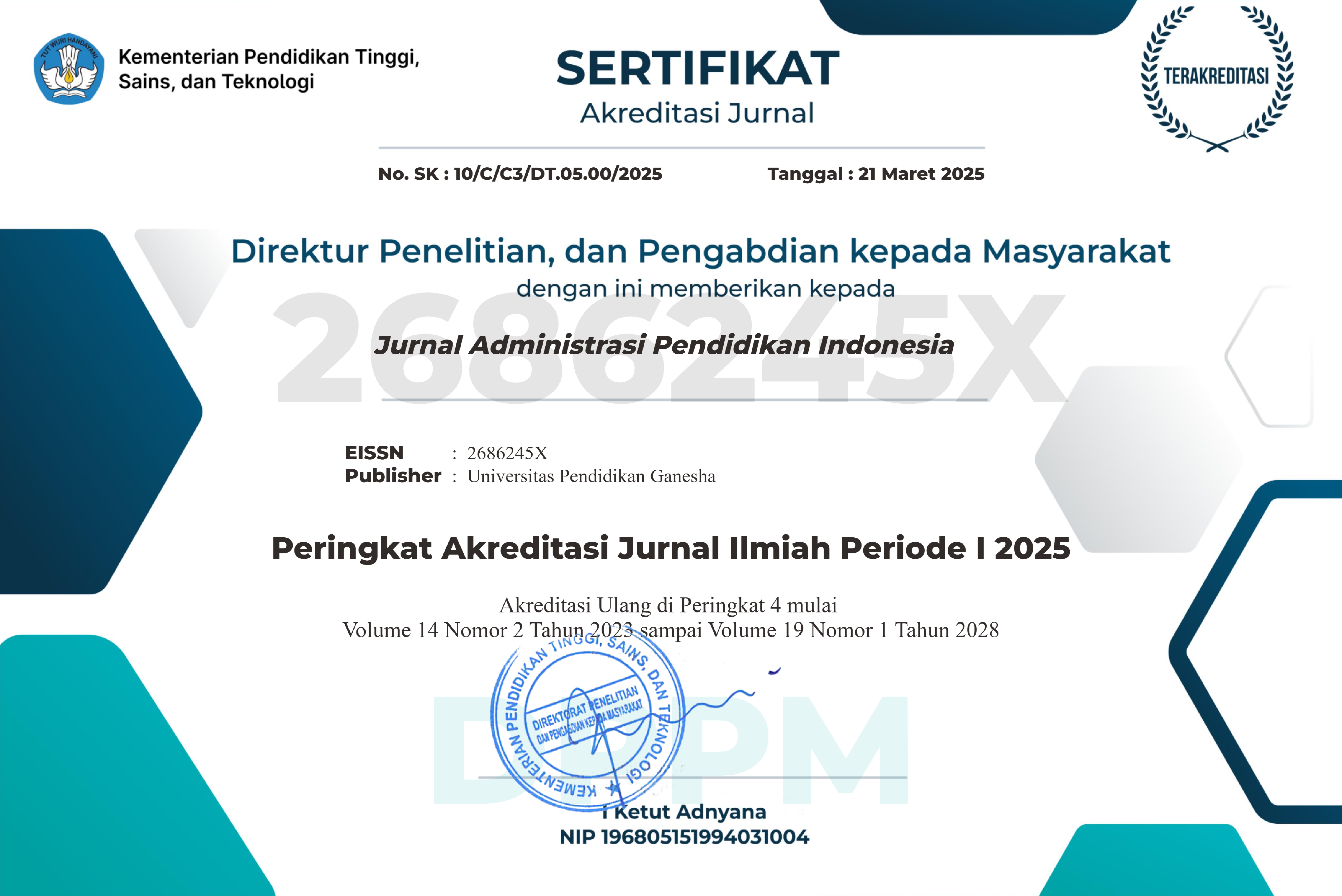Evaluation of the Implementation of the "Layonsari" System (Layanan Online Satu Jari) at the Faculty of Languages and Arts, Universitas Pendidikan Ganesha
DOI:
https://doi.org/10.23887/jurnal_ap.v12i1.404Keywords:
Layonsari System, Evaluation Study, CIPPAbstract
This study aims to determine the results of the evaluation separately or together in the context, input, process, product and constraints that occur in the implementation of the Layonsari system in Undiksha FBS. This research is a program evaluation research using the CIPP model. The population in this study amounted to 1953 people, while the sample amounted to 376 people. Data context, input, process, product in this study were collected using a questionnaire using a Likert scale of 1-5. Data analysis method used in this research is quantitative descriptive analysis method. To determine the effectiveness of applying the Layonsari system the raw scores are transformed into Z-scores then to T-Scores then verified into the Glickman Quadrant prototype. Based on the research that has been done, the results show that: 1) The effectiveness of Layonsari system implementation in terms of context obtained effective results (+), 2) The effectiveness of Layonsari system implementation in terms of input obtained effective results (+), 3) Effectiveness of Layonsari system implementation in terms of process obtained effective results (+), 4) Effectiveness of Layonsari system implementation in terms of product, obtained effective results (+), 5) Evaluation results together with the Layonsari system application in terms of context, input, process, product results are very effective ( + + + +), and 6) The constraints faced in implementing the Layonsari system are 1) some managers are not of competent people such as high school graduates and are old enough, 2) some education staff are still not ready to use new applications looking at age and unpreparedness in technology, 3) Some of the students there are indeed students who are not ready because there are those who have not used smartphones or quota issues, 4) Funds used are still minimal, and 5) Guidelines are less clearly socialized to students.
References
Arikunto, Suharsini. 2006. Prosedur Penelitian Suatu Pendekatan Praktik. Jakarta: PT. Rineka Cipta.
Bhakti, Yoga Budi. 2017. Evaluasi Program Model CIPP Pada Proses Pembelajaran IPA. Jurnal Inovasi Pendidikan Fisika dan Riset Ilmiah Volume 1 Nomor 2.
Dimas. 2015. Pengertian SI (Sistem Informasi) di https://www.kompasiana.com/dimasosd/55291077f17e6126268b48b6/pengertian-si-sistem-informasi/ (diakses tanggal 3 Juli 2019).
Parmadi, dkk. 2013. Studi Evaluasi Tentang Pelaksanaan Program pengembangan Diri Pada SMP Negeri di Kecamatan Negara. e-Journal Program Pascasarjana Universitas Pendidikan Ganesha Jurusan Pendidikan Dasar (Volume 3 Tahun 2013).
Riyanto, dkk. 2017. Evaluasi Pelaksanaan Praktik Industri Dengan Menggunakan Model CIPP Pada Program Studi Pendidikan Teknik Mesin Universitas Sebelas Maret Surakarta. Jurnal Ilmiah Pendidikan Teknik dan Kejuruan Volume 10 Nomor 2.











